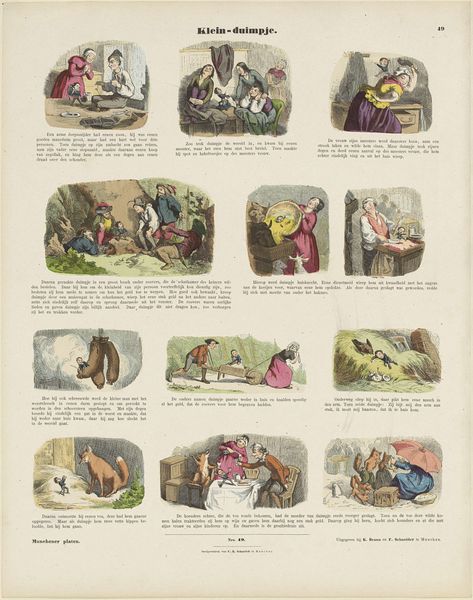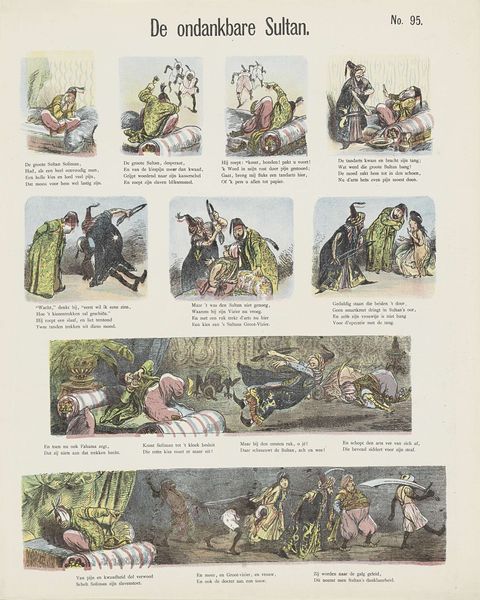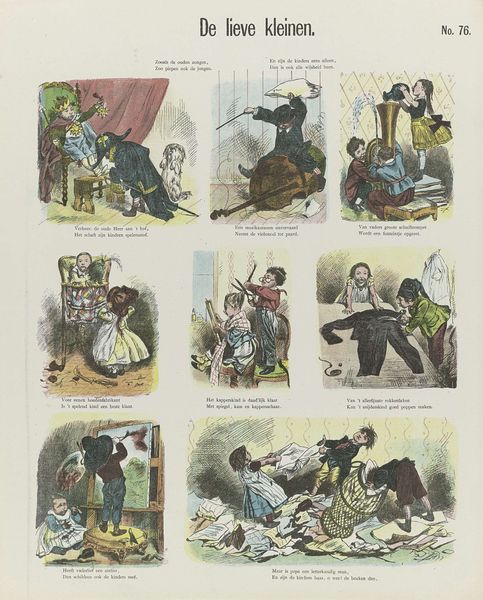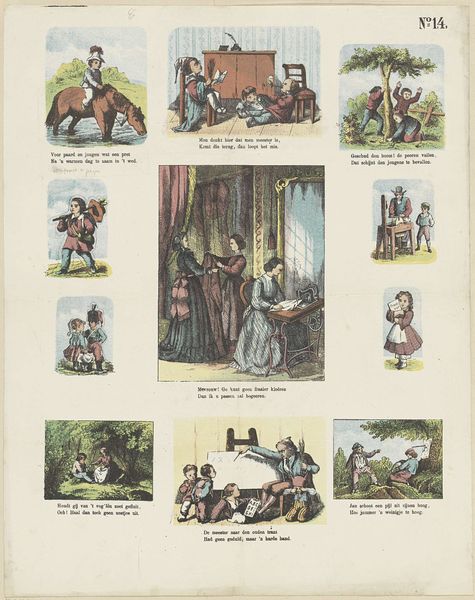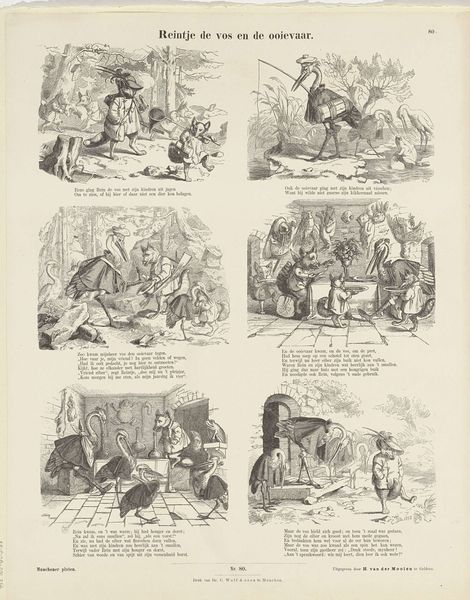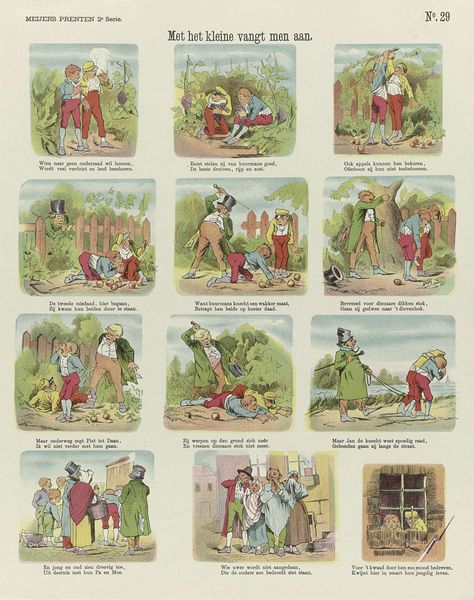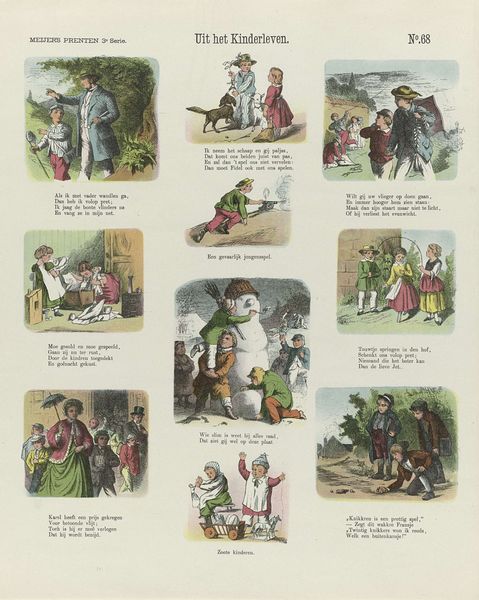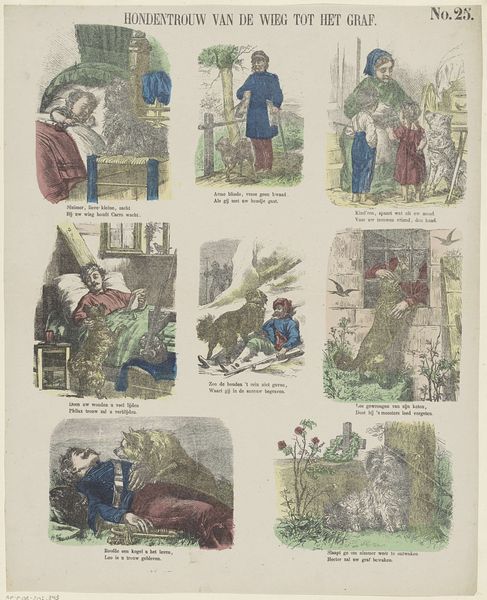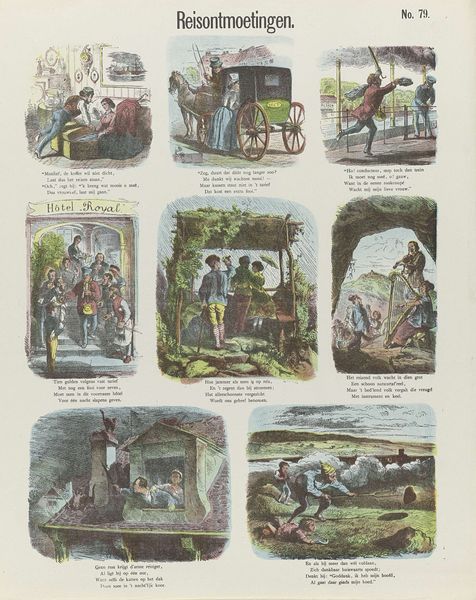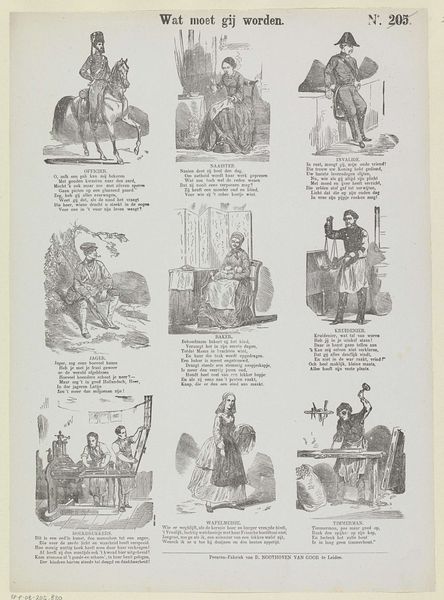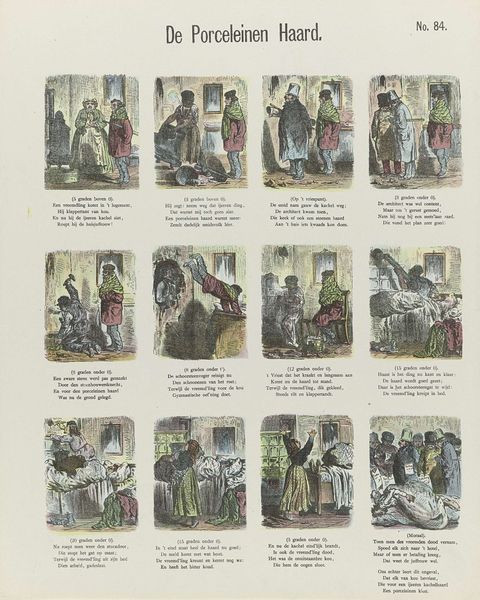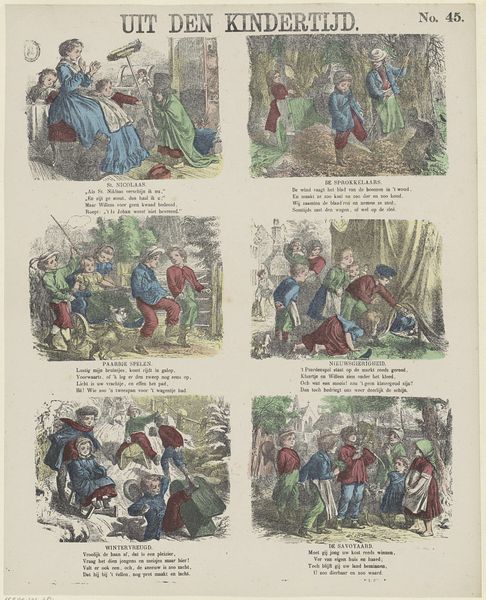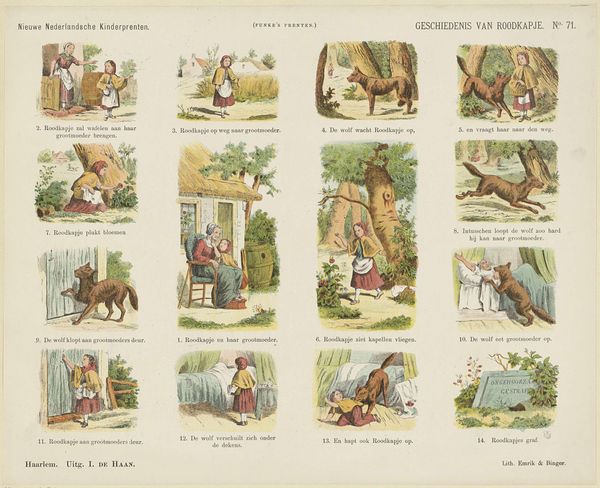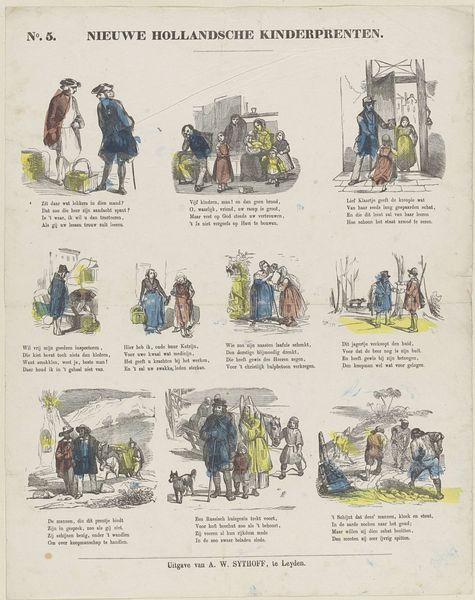
Dimensions: height 445 mm, width 349 mm
Copyright: Rijks Museum: Open Domain
Editor: This piece, titled "De gevolgen der ongehoorzaamheid," or "The Consequences of Disobedience," created sometime between 1843 and 1920 by C. Körner, uses tempera and lithography to present nine vignettes on a single print. What immediately strikes me is the almost comic book-like arrangement, yet the subject matter feels quite moralizing. What do you make of this, with its sequence of naughty behaviors? Curator: The arrangement of these images, reminiscent of a morality tale or perhaps even a cautionary children's book, really invites us to delve into the symbolic language of its time. I'm particularly drawn to the depiction of children's actions and their subsequent mishaps. Think about how disobedience is portrayed here: not as mere childish play, but as a deviation from established social and moral order. Editor: So, you're saying the imagery isn't just about slapstick, but speaks to something deeper in the culture? Curator: Precisely. Consider the fall from the tree, the interaction with the stove, the confrontation with the horse – each scene encapsulates a transgression and a direct consequence. We can see the dog in one frame – a domesticated animal, but even it becomes a participant or a victim of the children's disobedience. What might the artist be implying about humanity's relationship with nature or even instinct? How might this have resonated with its original audience? Editor: I see now; it's not just about the individual actions, but how those actions upset a larger, interconnected world, reminding me how powerful visual storytelling can be! Curator: Indeed! The enduring appeal of this work lies in its ability to capture timeless themes of behavior and its ripples of effect through the visual shorthand of its time.
Comments
No comments
Be the first to comment and join the conversation on the ultimate creative platform.
